What’s Up September 2024
Hello! Welcome to another addition of What’s Up, and this month September!
What's Up September 2024
September is possibly our favourite month for astronomers here at the Observatory. The nights are still warm (at least in comparison to winter, brrrr), most of the midge have died off, and we’re starting to get 8 hours of darkness, instead of the handful of hours we got in August. This means you can stargaze from 9pm and are still able to go to bed at a reasonable hour (if you want to!).
Milky Way
This time of year is the best time to see the oh so coveted sight: the Milky Way. This is our galaxy, and due to how high it appears in the sky in the UK, is much brighter now than in say January. Our galaxy is actually at it’s highest point in May and June, where the galactic centre is more visible than normal, but because it barely gets dark during these summer months the Milky Way is hidden. But September, with it’s dark nights and the Milky Way still being at a high altitude, is a great time to view it.
It’s a sad fact that due to light pollution, there’s an estimation that over half the UK have never seen the Milky Way, and about a third of the world's population live somewhere where it isn’t visible! This is a drastic change that has happened in just a few generations (think if Van Gogh had tried to paint A Starry Night in today's light polluted world).
If you’ve never seen the Milky Way, you’re not alone. But this month is a great chance to try and spot it!
Here are my tips to see our galaxy:
Be somewhere dark! The Milky Way is very faint, you’re not going to see it if you’re near a city or big town. Get out of the populated areas and go somewhere remote, however you don’t need to come all the way to Kielder Forest! Here is a map of the UK showing the light pollution:
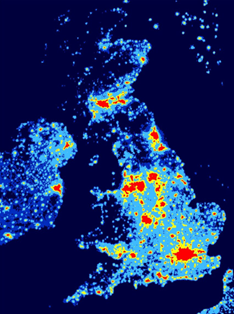
Light Pollution in the UK. Image Credit: http://www.cpre.org.uk/
You want to be somewhere where it’s dark blue. The more South you are, the trickier it will be as you can see if you’re in Northumberland, you’re very lucky as we have lots of options.
The moon is your enemy! We love the moon here at the observatory of course, but it can get in the way of seeing those fainter objects. You ideally want it to be New Moon (ie, no moon in the sky). You can use star gazing apps like Stellarium, or search the moon phases on the internet. This month, the very beginning or the very end of September is good.
Look Up! The milky way is right overhead, going through the constellations of Cygnus and Cassiopeia, as pictured below. Give your eyes time to adjust to the darkness, it will take maybe 10 minutes for your eyes to adjust to night vision. It will look like a faint cloud is running all the way across the sky.
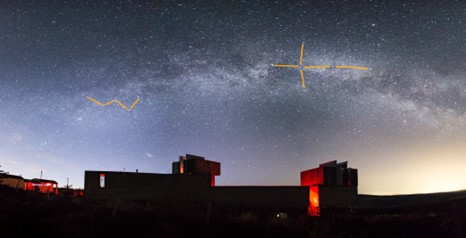
Milky Way Panorama with Cassiopeia and Cygnus highlighted. Dan Monk
Andromeda Galaxy
Speaking of galaxies, this month the Andromeda galaxy will be sitting around 70 degrees above the horizon at midnight. Objects are always better to view if they are high up as there is less atmosphere for the light to get through. So, if you’ve got a pair of binoculars or small telescope that’s sitting in the attic, this month is a great time to whip them out, go into your back garden and try and get a glimpse of our closest galaxy (which is still a hefty 2.5 million light years away). If you live in a place with very dark skies, you’ll be able to make out the small oval glow of the Andromeda Galaxy with your naked eye.
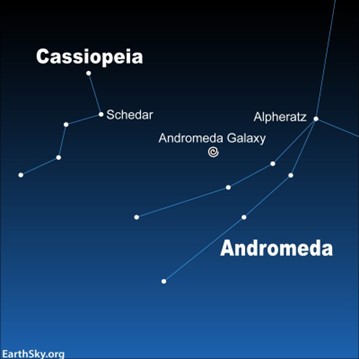
How to find Andromeda. Credit: EarthSky.org
Princess Andromeda is the constellation you need to find for this object, and she is the daughter of the much brighter and easier to spot Queen Cassiopeia, so we’ll start there. Queen Cassiopeia, doesn’t look much like a queen, but the letter ‘W’. Using the two stars on the right hand side of the ‘W’, we can line them up and follow it down until you hit the first bright star of Princess Andromeda. Hop to the next star to the right, and then a little bit above will be a faint smudge which is the Andromeda galaxy!
Unlike stars which are very sharp, galaxies will look like a faint diffuse cloud. In Andromeda’s case, a diffuse oval, with a bright spot in the centre.
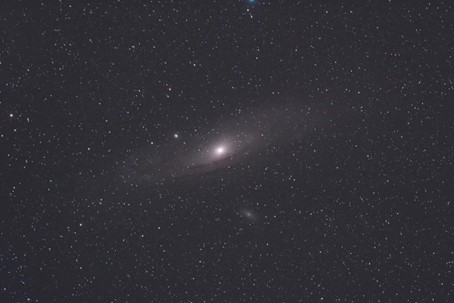
Andromeda Galaxy through a telescope. Credit: Pete Lawrence
Planets
Mercury will be at its greatest western elongation on September 5th, this is one of the best times to get a good look at this planet all year! You should be able to see it low in the sky right before sunrise.
It’s a great time of year to see Saturn, it will be more visible earlier in the evening at around 9pm. On September 8th, Saturn will be in opposition, meaning it will be the closest it gets to Earth as it orbits the Sun. It will be rising in the Southeast and setting in the Southwest staying fairly low on the horizon. To the eye, you will see a pale-yellow dot, but with a small telescope the famous rings will appear.
Special Events
On September 17th there will be a partial lunar eclipse at night. This happens when the moon passes through the Earth’s shadow from the Sun and only part of the moon is lit up. The best time to view the eclipse will be about 4am on September the 18th, so you must be willing to stay up late!
The Autumn Equinox occurs on September 22nd. In the Northern Hemisphere, it’s the first day of Autumn, and in the Southern Hemisphere, it’s the first day of Spring. During the equinoxes we tend to get more appearances of Aurora – so keep your alerts and notifications ON! It’s also the best time of year to catch a view of the Zodiacal light – interplanetary dust from our solar system. It’s best to look to the East right before dawn.

Kielder Observatory Aurora 2022. Dan Monk
Moon Phases
September 3rd: New moon
September 11th: First Quarter
September 17th: Partial Lunar Eclipse
September 18th: Full moon, supermoon
September 24th: Third Quarter









